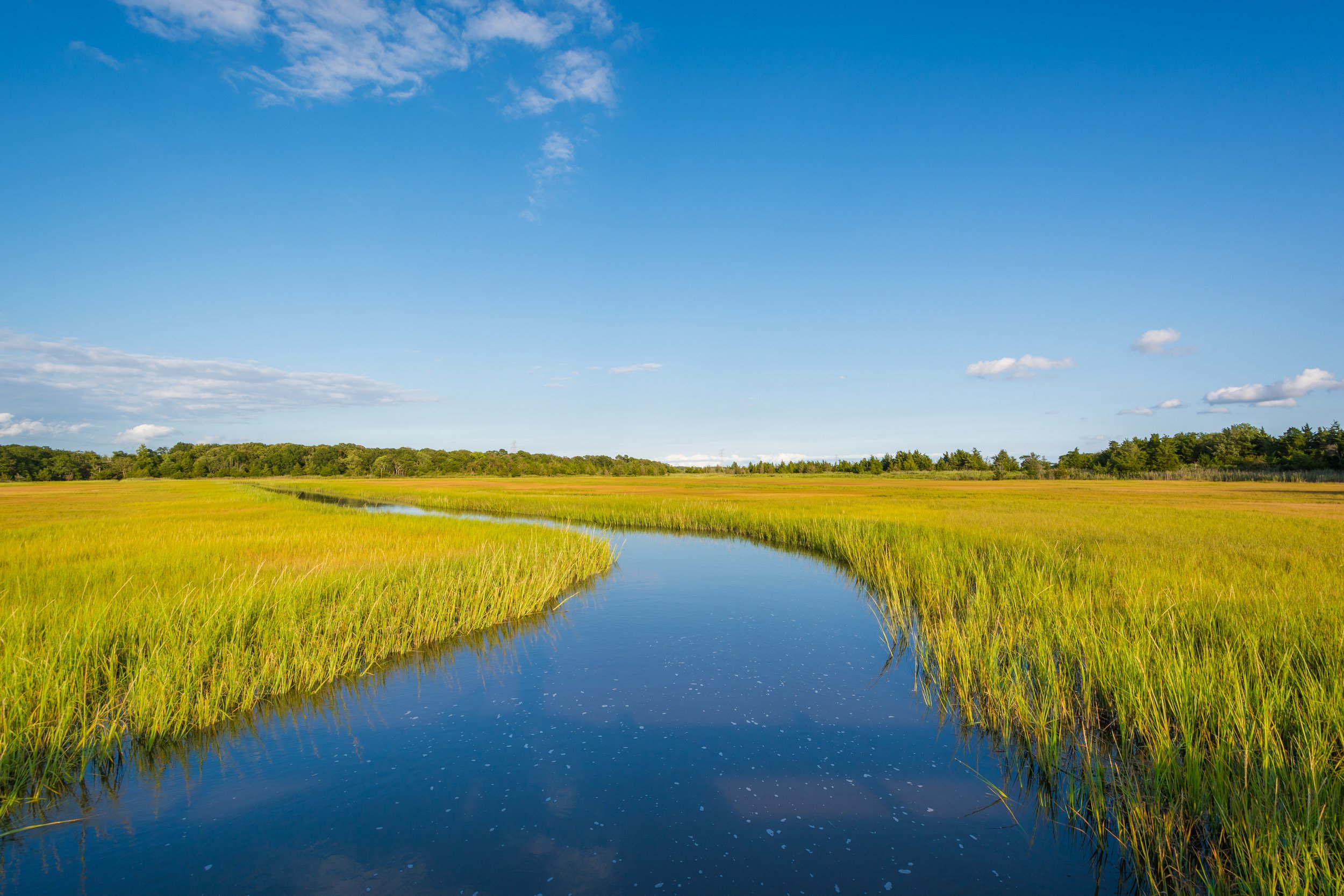
Solutions to the Effects of Global Warming along the Jersey Shore
THE CLIMATE IS CHANGING AND SO MUST WE!
We Must Do Something!
““Our house is still on fire. Your inaction is fueling the flames by the hour””
Simply Put:
We need to reduce greenhouse gas emissions that are responsible for climate change. We need to adopt cleaner ways to power our lives, homes, offices, machines, and transportation systems. By being more efficient and less wasteful we can produce fewer greenhouse gas emissions. We must also continue to protect open spaces and green & blue places, including forests, wetlands, grasslands, salt marshes, and seagrass meadows, which play a crucial role in absorbing and storing carbon dioxide from the atmosphere.
This might sound difficult, but if we all work together, many people can lessen the impacts from global climate change. Everyone can play a part in a clean energy future, including government, businesses, and you!
BUT we also need to be realistic and prepare for a life in an ever changing and warming climate. We need to make sure our homes, businesses, buildings, roads and infrastructure and all the important services we use in our life can withstand extreme weather events, which we will not be able to avoid in the near future.
It’s about limiting, reducing and storing our carbon, methane, and Greenhouse Gas Output & usage, while at the same time increasing and enhancing renewable and sustainable resources; and IDENTIFYING actions to prepare for a changing climate. This includes looking at ways we could enhance, restore and upgrade natural systems, health care, infrastructure, local economies, food systems, transportation and communication methods, and creating ways to care for people who might lose their home and help a loved one recover from a natural disaster.

One of the Best Things We Can Do - Invest in Blue Carbon Ecosystems Along the Jersey Shore.
What is a Blue Carbon Ecosystem?
Blue carbon refers to the carbon stored in coastal and marine ecosystems, including mangroves, salt marshes, and seagrass meadows.
Why it matters:
These ecosystems are highly effective at absorbing and storing carbon dioxide (CO2) from the atmosphere, playing a crucial role in mitigating climate change. Mangroves and salt marshes, for example, can sequester carbon at a rate 10 times greater than tropical forests and store 3 to 5 times more carbon per acre. Globally, coastal blue carbon ecosystems sequester an estimated 0.84 billion tons (Gt) of CO2 per year, making them highly efficient natural carbon sinks, and in the United States, they sequester 6.7 million tons of CO2 annually.
How they work:
Carbon sequestration: Plants in these ecosystems, like mangroves and seagrass, absorb CO2 from the atmosphere during photosynthesis.
Carbon storage: The carbon is then stored in the plants' tissues, roots, and in the sediments and soils of these coastal and marine areas.
Long-term storage: The wet, oxygen-poor conditions of coastal soils slow down the decomposition of organic matter, allowing carbon to remain stored for extended periods, even thousands of years.
Benefits Beyond Carbon Storage:
Coastal protection: Blue carbon ecosystems help protect coastlines from erosion, storms, and floods.
Biodiversity: They provide vital habitats for a wide variety of marine and coastal species.
Food security: They support fisheries and other coastal livelihoods.
Unfortunately, Blue Carbon ecosystems are facing threats around the world from aquaculture, agriculture, terrestrial and marine sources of pollution including microplastics and ghost gear, and industrial and urban coastal development, leading to their degradation and loss. But protecting and restoring these ecosystems is crucial for mitigating climate change and ensuring the long-term health of coastal and marine environments.
A tidal wetland and waterway near Tuckerton, NJ
According to the World Bank, Blue Carbon coastal ecosystems cover just 2% of the total ocean surface, but account for 50% of the ocean’s carbon absorption. For example, one hectare of mangroves stores five times more carbon than a similar area of forest on land. Seagrasses are another type of coastal ecosystem critical for carbon storage. Stopping seagrass destruction and degradation worldwide could save up to 650 million tons of CO2 emissions annually, roughly equivalent to the entire annual emissions of the global shipping industry.
Also, the benefits of protecting and restoring these ecosystems will make communities more resilient, such as a reduction in flooding and erosion, increased storm protection, and increased job creation and food security. The Changing Wealth of Nations report calculated that mangrove ecosystems protect more than 6 million people from flooding annually and prevent losses of $24 billion in productive assets.
Unfortunately, coastal areas storing Blue Carbon have been seriously eroded, with more than 50% of the world’s original salt marshes lost during the 20th century. Up to 35% of mangroves were destroyed through deforestation in the 1980s and 1990s, and an estimated 25% of total seagrass beds lost to date.
Image from The International Blue Carbon Initiative
Boardwalk over marshes at Edwin B. Forsythe National Wildlife Refuge in New Jersey.
What Blue Carbon Ecosystems Can We Protect Along the Jersey Shore?
New Jersey has lost about half of its original wetland area, with 45% lost since the pre-developed era, primarily due to human activities like draining and filling for agriculture and development.
New Jersey now has 613,500 acres of freshwater wetlands and 289,500 acres of coastal saltwater wetlands.
While The Wetlands Act of 1970 and the Freshwater Wetlands Protection Act of 1987 by the state have led to a decrease in permitted wetland losses, rising sea levels due to global warming pose a significant threat to coastal wetlands, causing them to be inundated and potentially destroyed. For example, a study found that nearly 12% of Barnegat Bay's tidal wetlands disappeared between 1972 and 2012, according to NJ Spotlight News.
WHAT CAN WE DO TO PROTECT VALUABLE BLUE CARBON WETLANDS IN NEW JERSEY?
An empty osprey nest in front of a massive incursion of human development in an important tidal wetland ecosystem along the Jersey Shore.
Ways to Protect Wetlands in New Jersey:
Implement stormwater management plans:
Develop and implement watershed-based stormwater management plans to reduce runoff and pollution entering wetlands.
Support wetland restoration projects:
Participate in or fund projects that restore degraded wetlands.
Promote responsible land use practices:
Encourage sustainable development practices that minimize impacts on wetlands and other natural areas.
Enforce environmental regulations:
Ensure that environmental regulations are effectively enforced to protect wetlands from illegal activities.
Educate the public:
Raise awareness about the importance of wetlands and the need for their protection through educational programs and outreach efforts.
Support research and monitoring:
Fund research and monitoring efforts to better understand wetland ecosystems and their needs.
Create and maintain wetland buffers:
Protect wetlands by establishing and maintaining buffer zones around them to prevent pollution and habitat fragmentation.
Consider using Environmental Resources Inventories (ERIs):
ERIs are narrative documents that characterize the location, quality, and importance of natural resources within a community, including wetlands.
Encourage the use of mitigation banks:
Mitigation banks allow developers to offset impacts to wetlands by contributing to wetland creation or restoration projects elsewhere.
Support the New Jersey Corporate Wetlands Restoration Partnership (NJCWRP):
This public-private organization is working to restore and enhance wetlands throughout the state.
Most important: We need to protect existing coastal wetlands from continued loss. This is crucial because they provide vital ecosystem services like flood control, water purification, and habitat for diverse species, while helping to combat climate change by storing carbon in their soils.
No matter the size, every coastal wetland system along the Jersey Shore is valuable and plays an important role to store carbon and help mitigate climate change.
We Need Many Actions From Everyone To Mitigate The Future Effects Of A Warming World.
Blue Carbon ecosystems will currently only sequester globally around 1 ton of carbon annually.
To meet the goals of the Paris Agreement, scientists estimate we need to sequester at least 7 billion tons of CO2 every year by 2050.
But Protecting Blue Carbon Ecosystems Is Not The Only Solution!
More Ideas!
For additional ways that people, towns, communities, cities, states, countries, and businesses (both large and small) can turn around the effects of global warming, we recommend reading Drawdown: The most comprehensive plan ever proposed to reverse global warming, edited by Paul Hawken and published by Penguin Books, 2017.
It includes the 100 most substantive solutions to reverse global warming, based on meticulous research by leading scientists and policymakers around the world.
Talk by Paul Hawken, editor of the book "Drawdown: The Most Comprehensive Plan Ever Proposed to Reverse Global Warming" recorded April 21, 2017 at Town Hall, Seattle, WA.
Does All This Seem Too Overwhelming?
SIMPLE ACTIONS YOU CAN DO RIGHT NOW TO HELP MITIGATE GLOBAL WARMING.
The car you drive: the most important personal climate decision. When you buy your next car, look for the one with the best fuel economy in its class. Each gallon of gas you use is responsible for 25 pounds of heat-trapping gases in the atmosphere. Better gas mileage not only reduces global warming, but will also save you thousands of dollars at the pump over the life of the vehicle. Upgrading from a 20 mpg car to a 40 mpg car can save you 4,500 gallons of gasoline over the car’s life span. At today’s gas prices, that’s a total savings of more than $18,000.
Make your house more air tight - Even in reasonably tight homes, air leaks may account for 15 to 25 percent of the heat our furnaces generate in winter or that our homes gain in summer. Take advantage of the free home energy audits offered by many utilities, which can help you identify (and reduce) the most significant air leaks.
Buy and use a programmable thermostat. This can reduce your heating and cooling emissions by 15 percent and save you $180 a year. During the summer, a setting of 78 degrees Fahrenheit is optimal during the hours you are at home, and 85 degrees when you are away during the day.
Eat less meat, especially from domestic or farm-raised animals. Food accounts for a sizable portion of our emissions. If you want to make cuts here, your best option is to reduce your consumption of meat, especially beef. That’s because a pound of beef is responsible for some 18 times the emissions of a pound of pasta. An average family of four that decides to cut their meat intake in half could avoid roughly three tons of emissions annually. Learn more about the effects of your meat choices.
Use power strips in your home office and home entertainment center. These will curb “phantom loads” and save a surprising amount on your electric bill. Keeping your laser printer turned on when not in use could be costing you as much as $130 annually. Learn more about power strips and other smart tools for saving energy.
Upgrade your refrigerator and air conditioner, especially if they are more than 20 years old. New ones are twice as efficient or more. For fridges - if they’re old, an upgrade can pay for itself in as little as three years in energy savings alone. Look for the Energy Star label when you shop for a new fridge or any other appliance, especially freezers, furnaces, air conditioners, and water heaters, which use the most energy. These items may cost a bit more initially, but the energy savings will pay back the extra investment within a couple of years.
Get an electricity monitor. Identify where the energy hogs are in your home, which can help you save hundreds of dollars annually. Electricity monitors can be found at most hardware store or you may even be able to borrow one from your local library.
Change those light bulbs. New LED light bulbs can give the same light for 15 percent the electricity. That adds up to more than $100 in savings for most families each year.
Wash clothes in cold water. They get just as clean with today’s detergents. But hot water washes use five times the energy—and create five times the emissions. This could save you nearly $100 a year.
Buy less stuff and only buy what you really need and will use. Reduce, re-use, and recycle—it’s not just about pollution, but the strategy will lower your emissions and help combat global warming.
Let policy makers know you are concerned about global warming. Our elected officials and business leaders need to hear from as many concerned citizens as possible.
Spread the word. If all Americans reduced their emissions by 20 percent we could shutter 200 of the nation’s 600 coal plants, a great step in fighting the worst consequences of climate change.











